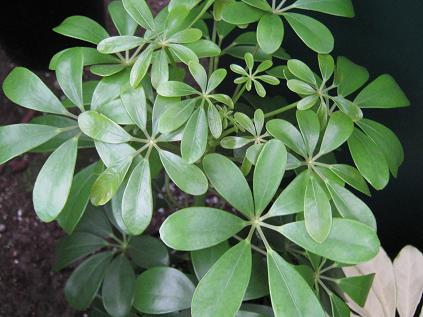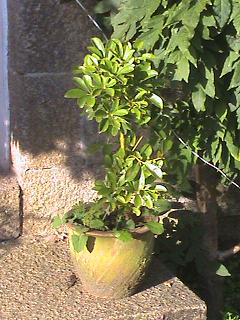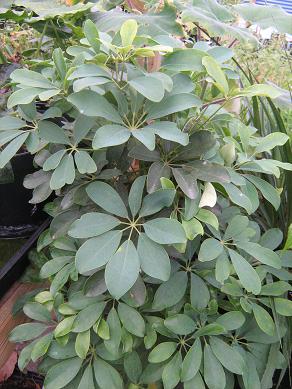 |
Usually, when names change I have a momentary stumble, and then adapt, but this one keeps tripping me up. I have always known it as Heptapleurum arboricola, and although
its move into the bosom of Schefflera is sensible, I still call it Heptapleurum and then correct myself. To keep current, all of Schefflera has now shifted back into
Heptapleurum, I will adapt eventually. A great houseplant,and like many familiar houseplants, quite cold tolerant. I have been growing it outside in this pot now for two years, and it is growing larger so recent warm winters have helped it. Previously I have killed it repeatedly outside (and a couple of times I have killed the variegated forms in the conservatory). I took pity on it this spring and moved it into the greenhouse - I don't think the temperatures are essential, but it gets waterered more reliably than it does by the front door (and there is no doubt it has appreciated it)! I have picked the wrong couple of years to try my luck with the more tender Schefflera. I think I have probably killed this one again - there is still time for a new shoot to burst from low down, but this isn't a species that usually obliges' If it looks dead, it probably is. It was happy enough in September, but it hasn't been a kind winter. In 2005 Bleddyn Wynn-Jones wrote: "Schefflera arboricola, the popular house-plant, is another species currently under trial at Crug Farm Plants. This is a more robust species which we encountered in the north-eastern area of the island, at an altitude of about 1,000m: it is reputed to occur from low to high altitude throughout the island - something we have not witnessed at first hand despite extensive foraging over the years. Where we found it growing in shaded forest conditions, it formed a lax, almost scandent, shrub with flexuous branches to 4m long bearing broadly elliptic, leathery, glossy leaflets 20cm long and nearly half as wide. Conversely, in well-lit conditions in full sun it formed a branched, bushy, large shrub of similar dimensions, but both forms were conspicuous with long terminal panicles of yellow fruit, turning orange when ripe. With us the foliage is blackened by frost at -5degC but more recent collections may prove to be hardier." |
|
| 20th September 2009 | ||


